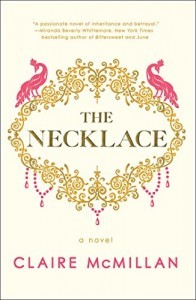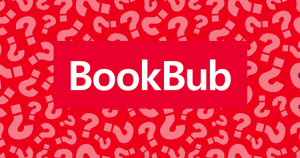Carol Newman Cronin's Blog, page 44
October 12, 2017
Caribbean: What Happens Now?
Islands, as one of my minor characters points out, are “such a metaphor for our lives, yanno?” Their isolation is both a blessing—a key part of our winter escapes—and a curse, now that a trifecta of hurricanes have washed away Caribbean boats, houses, leaves, and most everything else.
Vacation mode
Thirty years ago, I spent two months sailing around the Caribbean, long enough to watch several weeks’ worth of winter visitors come and go. Since then, I’ve gone back whenever I got the chance, joining the ranks of those weeklong vacationers. Each year, I’d discover a jetski rental in another formerly remote anchorage, or a favorite beachside beer hut that now offered icy umbrella drinks and goat cheese salads. On some islands, light pollution began to interfere with stargazing. (Of course, there were also an equal number of improvements: a wide variety of food options, reliably hot showers, cockroach-free dining.)
Now that Irma, José, and Maria have stripped away those thirty-plus years of “progress,” I’ve been wondering: what’s next for the islands that have so reliably provided us all with a winter escape hatch?
The devastation of so many favorite places at once is completely overwhelming. As sailors, we were first told to show up as usual (for spring regattas that are still on the schedule) and then, a few days later, instructed firmly to stay away (as cruisers who might consider crashing the recovery party). Other than send as many dollars as we can afford, what should we do?
Here’s what I know
Development will happen all over again, even though it’s only a matter of time before the next big storm washes and blows it all away. Our desire for fine drinking and dining beachside will once again encourage shoreline “improvements.”
“The Caribbean” is actually a collection of fiercely independent nation-states. Each island will adapt to the new reality differently; some will make longer-term plans, while others will simply rebuild the wreckage into something useable again, as quickly as they can. Leadership will vary, which will affect recoveries in both timing and quality. It will be years before we’ll be able to say who did things best (though responses to past storms will be reliable indicators).
The can-do attitude of locals will enable them to rebuild faster (though perhaps not better) than we expect. In October of 2016, sailing a regatta in Nassau less than ten days after Hurricane Matthew’s eye passed right over that island showed how islanders make things happen.
You can’t keep the gringos away. Caribbean winter sun and fun will continue to attract us, for as many days or weeks as we can manage each year. As the most reliable source of income, vacation-mode attractions will continue to dominate the local economy.
Local choices
Part of me wishes the islands could remain “unimproved.” How many jetski rentals and goat cheese salads do we really need? But that is neither realistic nor fair to the people who live in our vacation paradise year-round. The locals have a right to make a living, and an “improved” coastline will attract more vacation dollars than palm trees and sand.
What’s happened in tropical paradise is too big and too complicated to absorb, so for now I’m going to focus on one simple thought: I can’t wait to see what all those resilient Caribbean islanders will do with their future.
October 5, 2017
Writing Consistent Characters: Devilish Details
A few months ago I wrote about
Devil’s in the details
When I start writing about a new character, I try to stay out of the way and let them “appear” on the big screen between my ears. I don’t try to force descriptions about eye color or height, or what she does with her hands when she’s waiting in line for a latte, but usually one detail will pop up that just seems right. (That detail often turns out to be key to the character’s story in some way, though I usually don’t figure that out right away.)
Then I get distracted by another part of the story, and move on to another character. I might even have to leave the writing altogether for a few weeks, as more pressing projects require my attention.
Word for word
Whenever I find my way back to her, those key details remain intact. Her eyes are still blue green, and she still balls her fists up in her jacket pockets until she can warm her hands around that steaming latte. Descriptions written weeks apart are often surprisingly similar—sometimes word for word.
As age makes me more and more forgetful of the details in my real world, the way these fictional details stick to my brain surprises me even more. Obviously they are stored in the language section of my brain, rather than the sieve-like department that is supposed to retain numbers and other hard “data.”
The balled-up fists of an imaginary friend shouldn’t be more important than real numerical facts. But since I can picture these people in my head quite clearly long before they make it onto the page, my brain can retrieve the details. And that makes writing consistent characters a whole lot easier.
September 28, 2017
Dream-thinking in Images
Lying in bed this morning, still half-asleep, an image came into my head. It’s my most creative time, that gap between sleep and full consciousness, because I dream-think rather than trying to leap ahead to a fully-formed idea.
This morning’s image was a flower bed, jagged-edged but soft, the colors bathed in the golden light of pre-dawn September morning and thus more subtle than this post-sunrise photo. In that time between sleep and awake, before the more rational part of my brain kicked in, all those edges seemed to represent the transition from sleep to awake, as well as the leap from factual detail to fictional story.

My best ideas are sparked by images like this. Most seem quite trivial at the time: A leaf blowing down a street. A photo hanging on a wall. Catching the next wave. A rocky island. Later, when I’m fully awake, I try to transfer them onto the page without losing too much of their potential.
My best writing lets the specifics of a scene speak for the larger theme. Letting the reader connect the dots, picking up the breadcrumbs I’ve dropped along the way, is the best way to create that “aha!” ending that makes writing memorable.
Tomorrow morning, I hope to wake up slowly again, dream-thinking in images. It’s the only time that real September flowers might inspire a garden that doesn’t actually exist yet.
September 21, 2017
5 Reasons to Keep Blogging
I have a confession to make. With other projects (both billable and otherwise) crowding my work days, I’ve thought several times about giving up this weekly posting habit. After all, blogging is no longer “cool.” And it’s hard to believe it will raise my visibility enough to attract a lot of new readers. So is there really any long term gain in creating a new post every Thursday?
 (I’ve written about this before. Back in 2012, I said that blogging is “creatively satisfying. It gives me the chance to share my thoughts and views with others, worried only about communicating an idea and not whether that idea will sell.” That is still true.)
(I’ve written about this before. Back in 2012, I said that blogging is “creatively satisfying. It gives me the chance to share my thoughts and views with others, worried only about communicating an idea and not whether that idea will sell.” That is still true.)
After a lot of consideration, my answer to whether this weekly effort is really worth it is still a firm “yes.” Here are five reasons why blogging will remain an important part of my weekly routine.
Blogging helps me figure out what I’m really trying to say. Sometimes I start off with a small kernel of an idea and it develops into something completely different; then I have to edit until it communicates that new thought quickly and clearly.
I get to complete a project each week. Writing a novel, it’s often hard to see any real progress from all those words placed on all those pages (or, in later stages, removed from all those pages). Billable projects often have completion dates that are weeks or months away and somewhat out of my control. No matter how many bigger projects I have going, writing a blog post gives me a weekly hit of that drug called “done.”
I get to try out titles, story lines, and characters. I know you all want the best for me and my books, so this blog has become a safe zone to try out ideas out that might not be ready for prime-time (or worthy of more effort).
It helps me hone my voice. Eight years of blogging (as well as other writing) has taught me a lot about how to get a sentence to bend into what I’m really trying to say.
I make it into your inbox once a week. These blogs keep me engaged with readers, even when the next book is still a long way from finished.
The next time I start doubting the value of blogging, I’ll return to this list. How about you… did this spark any other reasons why we writers should keep blogging? Let me know in the comments below. (Meanwhile, thanks for giving me the excuse to get my weekly fix of “done.”)
September 14, 2017
Why Siblings Help Us Understand Our Characters
On the plane ride home from a family wedding, I was daydreaming about the special link between sisters and brothers when it occurred to me: almost all of the characters in Island Shell Game, my not-quite-finished novel, are only children. I certainly didn’t plan it that way… but it does seem a little strange.

The imaginary island where the book takes place is quite a tangled web of emotional connections, so maybe blood relationships would’ve just over-complicated things. Or perhaps children who grow up alone are more drawn to isolated islands than those who grow up as part of a crowd?
James, the main character, is sibling-free because, after a series of miscarriages, his mother was told the risk of another pregnancy would be too high. Most of the other family histories remain in the shadows, which might not be the case if there were more siblings to “interview.” Sisters and brothers would’ve eagerly dug out the family skeletons, which might’ve provide a few shortcuts to understanding why all these folks choose to live in such an isolated world.
No matter how old we are or how often we see each other, siblings hold up a mirror that shows us as we really are. Shared memories of insignificant childhood moments (boring car rides, clearing the dinner table, feeding the dog) weave a web of sibling-knowledge that can’t be duplicated by the partners and friends we choose for ourselves. So maybe when my next round of characters come knocking, they’ll bring with them all the baggage of a large family… including the sibling-mirrors that will make it easier to see each one clearly.
September 7, 2017
Putting on My Publishing Patience Pants
Last week I wrote about the confusion of publishing options available to 21st century authors. This week I want to confront head on a reality of any publishing effort: it requires more patience than most authors possess.
One of the undeniable lures of self-publishing is the idea of getting a book out to readers as soon as it’s “finished.” Here’s the problem: I always think a book is “finished” before it’s quite the best it could possibly be. Once the basic plot structure is on the page, and most of the unnecessary details have been weeded out, I figure it’s ready for my first reader and a few select others. I’m excited to share the world I’ve created, and I also want to make sure there aren’t any big plotholes.
Editing matters
Most of those readers jump up and down with excitement and say, “It’s GREAT! When will it be published?” One or two say “it’s good, and here’s how it could be even better.” Only after hearing that feedback can I begin the second and third round of edits, which is what will refine it into something capable of standing up and shouting, “read me!”
Oliver’s Surprise probably would not be part of school curricula ten years after it first came out if Laurie hadn’t broken her leg and slowed down the publishing process. For the new book, I’ve been fortunate to work with an editor who has pointed out so many possible improvements that I’m eager to dive into another round of edits. And that will take more time than I think, because one improvement begets another, and then another… leading to a better story, but also to a lot of hours at the keyboard, long after I thought it was “finished.”
Publicity takes time too
Meanwhile, I’ve been talking with a few book publicists who’ve pointed out that it takes several months to properly launch a book. That reality put an end to my original fantasy of having books out for the 2017 holiday shopping season. For once, both editing and marketing signs point in the same direction: slow down, and don’t make “soon” a higher priority than “great.”
I’m really excited about this book, partly because it has a much wider potential audience than my previous books. It isn’t “just” a story that will appeal to sailors, or a young adult historical fantasy with local appeal. It’s a literary novel about the battle for an island’s future. And only by taking the time to make it really, really good will it draw in those undecided readers who don’t (yet) know me.
Ten years from now, it won’t matter how long it takes to complete; it will only matter if the story is still attracting an audience. So I’m putting on my patience pants, one leg at a time—and asking you to do the same.
And now (if only to see who’s made it all the way through this post), I’ll leave you with some eternal fashion advice from an old acquaintance: “Stick with me, kid—you’ll be farting through silk.”
August 31, 2017
50 Shades of Publishing: Can You Really Have it All?
When I sent my very first query to a literary agent back in the late 1900s, self-publishing was considered a sign of desperation by the entire book industry—even by many of us who were seriously considering it. The weight of an imprint, we were told, was the only real path to authorly “success.”

Then in 2011, the self-published 50 Shades of Grey was picked up by a major publishing house… and quickly became one of the best-read books ever (though it definitely flunked critical reviews). According to a 2015 article in The Guardian, “Fifty Shades didn’t just redefine good; the novel also redefined digital publishing, by taking a title that had sold well in a digital format and repackaging it for print.” (Read the article)
Too many choices?
Today, book industry news seesaws between stories of Big Name authors turning down six figure contracts (in order to maintain control of their own work) and other equally Big Names who’ve stuck with the traditional route, believing that the weight of an imprint still matters to their readers—especially the undecided ones. There are also a few who’ve decided to pursue both strategies simultaneously. So is traditional publishing still the only real path to success, or is landing an agent/publisher completely unnecessary and outdated? Either case can be proved with carefully selected reading.
Which brings me to my question: what’s the right choice for small name authors?
The answer is, “it’s complicated.”
Up until a few weeks ago, I was planning to self-publish the next book. Then a marketing professional I hired to look over the manuscript made a surprise suggestion: “You’ve written a lovely, engaging book and I think the writing is strong enough to send out to literary agents. I can’t guarantee interest, but I do believe your writing is strong.”
And while I was still absorbing that huge compliment, she surprised me all over again.
“It’s okay to publish now, and send out letters to see if there’s any interest.”
Really?
After digging a little deeper, I’ve discovered that self-publishing still sets off alarm bells for some agents. Sarah LaPolla of the Bradford Literary Agency puts it this way: “I don’t begrudge anyone for self-publishing, but if they’re now approaching me for representation, I need to know the full scope of that decision and where they hope to go from there.” (Read the full interview)
So the answer seems to be: yes, you can have it all (both self-pub and find an agent), but be prepared to answer a few extra questions about your motives.
Definition of “done”
Like any author above a certain age, landing an agent and a publishing contract would feel like a true sign of authorly success. It would also mean handing over some of the responsibility (and a lot of the control) for bringing each book out into the world, which means I could focus on writing the next story. But would it really lead to more happy readers than I could get on my own? There’s no way to know the answer to that, except in hindsight.
For now, I’m going to take the marketer’s advice and send out a few queries—while continuing to edit and refine the manuscript. When it’s ready, I’ll decide whether to self-pub or not. And that means no matter what, you all will have to be a little more patient.
In the big picture, the definition of “done” is the same regardless of how the book is published: writing and packaging the best book I can, and then making it visible to as many potential readers as possible. Which means I can, in fact, have it all—no matter which “shade” of publishing turns out to be the best option.
August 24, 2017
Book Review: The Necklace
When Nell’s Great Aunt LouLou dies in 2009, she leaves all of her jewelry to her prickly granddaughter, Pansy—except for a very old and unusual necklace, which she specifically wills to Nell. She also appoints Nell as the estate’s executor, partly because Nell is a well-respected lawyer. So even though Nell and her parents have always stayed away from the Quincy family dramas, she is drawn into the mystery of the necklace’s origins.
(And that’s only the first chapter.)
The question, of course, is why.
“That is the danger,” her father explains. “First things are known, but not talked about. Then they’re not talked about for so long that they become unknown.”
In the second chapter, LouLou’s brother Ambrose takes us back to 1925, the year the necklace first came into the family. After that, the story alternates between past and present. And since everything we readers need to know is revealed through dialogue and on-site description, we feel like we are right there in the breakfast rooms and along for the country rides as Nell finally understands the long-ago family drama that explains everything.
Singing sentences
In both past and present, the language and sentence structure sing. The dialogue is perfectly pitched to sound “normal” while also revealing surprises and a great deal about each character, and there’s just enough description. Here’s one example, from the first chapter, just after Loulou’s will is read:
‘She always did feel guilty about your mother,’ [Uncle] Baldwin continues to Nell in the magnanimous tone of someone secure that he’s gotten everything he wanted.
I especially enjoyed Claire McMillan’s early descriptions of the estate lawyer. “Nell recognizes a fellow pro,” the first chapter explains. “She’s honed similar political skills in depositions and courtrooms and knows exactly how much effort is required to make this look natural. As she watches his finesse, she decides that if one of the most expensive firms in town, plus Loulou—who’d been a notorious snob—can trust him, then she’ll keep an open mind.”
Where are we?
All of the characters have their flaws, even the narrators, and none is too quick to realize their mistakes (or to be forgiven for them by the others). That makes them feel like friends or even family rather than book characters, and while this is a large part of the book’s charm such familiarity also breeds my primary complaint: it assumes we are already aware of the location. In the first chapter, the only references to place are actively elsewhere; Nell’s parents “preferred living in Oregon, where they’d met, and where Nell lives now. They’d put a country between themselves and the Quincys reflexively sizing them up. Despite this removal, Nell’s mother would insist they make a pilgrimage here most summers.” Which left me to wonder: Where, exactly, is “here”?
Maybe the setting vagueness was intentional (to make the story more universal), but to me it was distracting. Two chapters in, I actually paged back to the beginning (and also re-read the jacket flap) to see if I’d missed the naming of an actual place. Nope. It wasn’t until several chapters in that the city was finally specified—and instantly I had a better feel for the setting. Why keep that a secret for so long?
Later on in the book, there is a similar issue: a change of location that is too vague and so interferes with the story. It’s as if the author worked so hard not to “tell” any details that a few important ones were lost.
Long but not overwhelming
At three hundred pages, The Necklace is long enough to get lost in but not overwhelming—especially since it’s most definitely a page-turner. Each chapter left me wanting to know more, and the way past and present are interwoven moved the story forward at a very consistent pace. Kate Morton fans will enjoy this book, though readers who find her novels too dense will be intrigued by the lighter language of this book. The English language is a very flexible tool, and in the right hands it can be made to accomplish anything.
August 17, 2017
Bookbub: Personal Ebook Shopper
WARNING: This post encourages the purchasing of ebooks and may not be suitable for all audiences. (For more about the plusses and minuses of ebooks, read Paperbacks or Protons: It’s All About the Story..)
 Haven’t heard of Bookbub yet? You’re in for a treat. In exchange for your email address, you receive a daily email of book deals tailored to your chosen interests. Fiction or non-fiction, deep thought or beach read—it’s the digital way to build up the equivalent of a pile of books waiting to be read, all for less than many of us spend on our daily coffee.
Haven’t heard of Bookbub yet? You’re in for a treat. In exchange for your email address, you receive a daily email of book deals tailored to your chosen interests. Fiction or non-fiction, deep thought or beach read—it’s the digital way to build up the equivalent of a pile of books waiting to be read, all for less than many of us spend on our daily coffee.
(And once you sign up, please help the success of my next book by clicking through to my profile and following me.)
How it works
Bookbub doesn’t sell books; they make readers aware of book deals that might be of interest. This Massachusetts-based company has been quietly building a community since 2012, and now they receive hundreds of submissions a day for their featured deals from publishers and authors. Human editors then winnow all those down to a chosen few, which are formatted into a easy-to-skim short list and sent out to readers.
And Bookbub is up front about how their editors make these difficult choices. Minimum requirements start off with discount level and price before quickly moving on to “typo and error free.” Next is a quality assessment that includes reviews, author accolades, and formatting. (For more detail, view their infographic.)
What doesn’t matter at all is who actually published a book, eliminating the usual question of “traditional or self-pub?”
And because each deal is vetted by an actual human, poor quality books are winnowed out. The result is a top quality selection more varied in publishing year and author name than any physical bookstore could possibly accommodate. And since prices are anywhere from free to $2.99 for a limited time, it’s not a big deal to take a chance on an unknown author or three.
Great for readers
I signed up for Bookbub about a year ago. Initially the book suggestions weren’t that appealing because I had checked way too many categories. (It turned out I wasn’t actually interested in either trashy novels or Tolstoy.) As soon as I better refined my personal list, a tempting array of literary and historical fiction began to appear in my inbox that I wouldn’t have found anywhere else. And the low prices (expiring soon) make impulse-buying fun rather than stressful on my budget.
Great for authors
As I look ahead to marketing and publishing my next book, Bookbub is one of the few places where lesser-known names like me can go head to head with the big guns. We’re judged only by the quality of our books—and the engagement of our audience.
And that’s where you come in. If you’re willing to sign up (or are already a member), please click the link (top right on this page) and choose “follow.” You’ll receive a notice on deals and new releases, and it will be a big help to my publishing future.
No filter, and no such thing as “back list”
Bookbub brings readers and authors together, eliminating traditional publishing’s focus on the latest and greatest next-best-thing. Most of the deals are on books that have been around a while, which is fine with me; if a book is well-written about a topic I’m interested in, I don’t care if it was published in 2017 or 2007 or even 1907. Bookbub gets that, and unlike a physical bookstore their shelf-space is unlimited. That makes it possible to discount older books, which might also alert readers to the latest and greatest of a particular author. So it’s good for everyone.
What could be more lovely than having customized book offers coming into your inbox every day? Unread books are like money in the bank… even if the bookshelf is a virtual one.
August 10, 2017
Why Project Management Might Make You Want to Write a Novel
Last week I had a chat with a friend who’s considering a new leadership position in a company I know well. One of the first questions was what I thought the main focus of the job would be, and to me the answer was obvious: creating and managing a project plan that would keep everyone from getting too caught up in the details on the way to the end goal. And that’s when I realized: novelists are really project managers, only we call it “plotting” instead of “leadership.”
Have a plan, not just an end goal
I’d already been thinking a lot about effective project management after a recent non-fiction project didn’t go as smoothly as I would’ve liked. We started out with a clear goal, but before we figured out the path that would lead us there we strayed way too far into the weeds: where are we going to store our files? Who’s going to have access? It was like sitting down to write a novel and focusing on punctuation and word count before knowing the plot.
After a week or two of wandering off track, we refocused and developed a plan. And sure enough, most of the pesky details sorted themselves out along the way—just like typos and spelling errors are usually weeded out during the editing process.
Turning an idea into a story worth sharing
Every novel starts with a great idea, but the only way to write a story worth sharing is to create a plot and then stick to it. Since characters can’t see the end of their own story, we novelists have to be their project manager. If we do our work well, each step forward seems inevitable because all distracting detours and details have been quietly eliminated—no matter how fascinating or pithy or appealingly alliterative they might be.
My friend didn’t accept that job, but our conversation reminded me that both project management and novel writing require a plan with a capital P. Projects will never go smoothly unless both the desired end goal and the stepping stones to get there are spelled out ahead of time. A novel will never be a satisfying read unless the ending and the choices made along the way seem both logical and inevitable. And only an effective project leader can keep the big picture in focus. Because once all those shiny details start waving their arms, it’s all too easy to be distracted.





